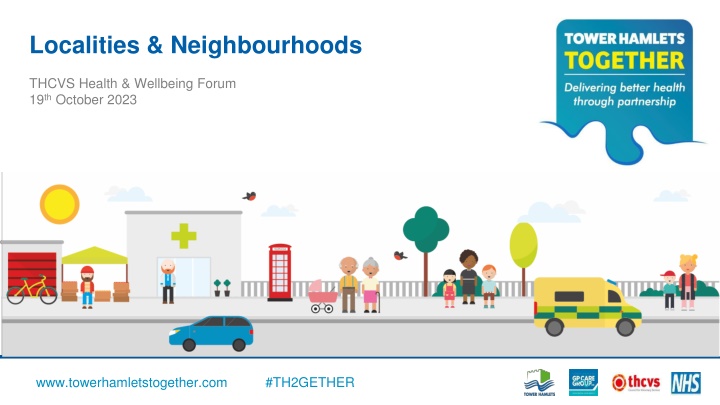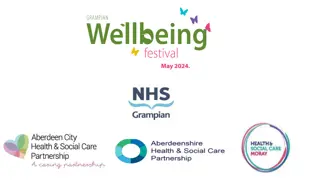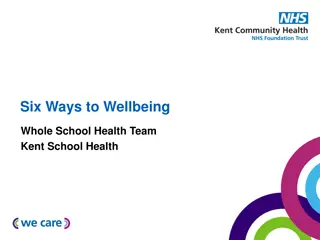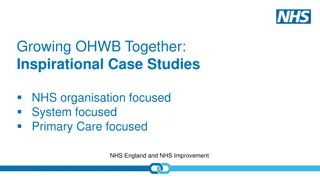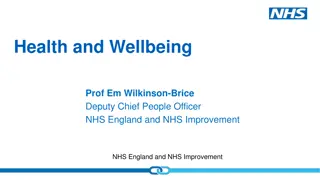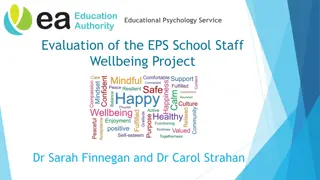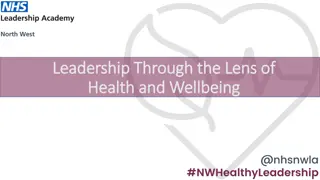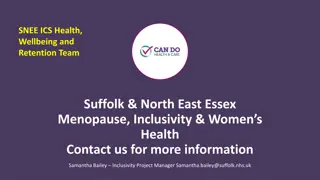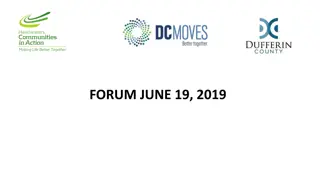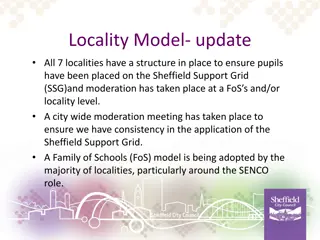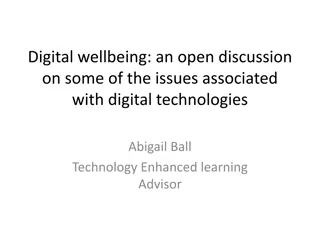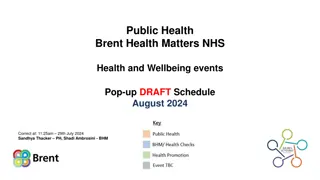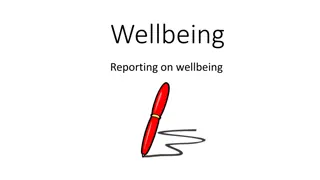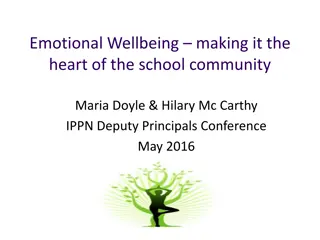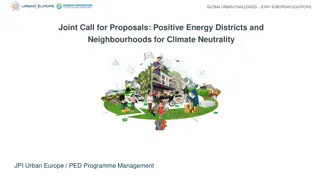Localities & Neighbourhoods - Health & Wellbeing Forum Overview
This overview outlines the Localities & Neighbourhoods Health & Wellbeing Forum in Tower Hamlets, focusing on integrated care, community engagement, and addressing health inequalities at a local level. The program aims to enhance agency and wellbeing within communities through collaborative efforts and innovative approaches towards improving health outcomes.
Download Presentation

Please find below an Image/Link to download the presentation.
The content on the website is provided AS IS for your information and personal use only. It may not be sold, licensed, or shared on other websites without obtaining consent from the author.If you encounter any issues during the download, it is possible that the publisher has removed the file from their server.
You are allowed to download the files provided on this website for personal or commercial use, subject to the condition that they are used lawfully. All files are the property of their respective owners.
The content on the website is provided AS IS for your information and personal use only. It may not be sold, licensed, or shared on other websites without obtaining consent from the author.
E N D
Presentation Transcript
Localities & Neighbourhoods THCVS Health & Wellbeing Forum 19th October 2023 www.towerhamletstogether.com #TH2GETHER
Background & Context Integration and working in and with neighbourhoods are two key national and local objectives. The Fuller review has a focus on integrated neighbourhood teams (INTs) providing better continuity of care, preventative healthcare as well as access and a blended generalist and specialist workforce drawn from all sectors. The neighbourhood will build on existing networks and assets across providers, residents and community groups already in place to create a geographical neighbourhood community. Tower Hamlets already has some of its health and care services organised around its four localities and 7 PCNs. There is also a huge amount of great work being done in communities by the VCS who are a central part of the model. As such, a large part of the Localities and Neighbourhoods Programme concerns the coordination of multiple initiatives into a single, coherent vision, in addition to some new and distinct elements. The Tower Hamlets Together (THT) Board approved the Case for Change in October 2023. Where are our neighbourhoods? Existing PCN networks plus assets across providers, residents & community groups already in place This meeting is the first part of the engagement for phase two of the Programme aimed at developing the model. This is a chance to shape the model. It s important to stress that the Programme is in its infancy and the model is to be developed through engagement in these sorts of meetings. At all points of the Programme, it will be developed through consistent and meaningful engagement with residents and staff alike. Where are our localities? Localities are made up of two Primary Care Networks this is where some of our health & care services are organised
The Vision Localities and Neighbourhoods is a vison of how to improve health and wellbeing, address health inequalities and prevent ill health on a locality and neighbourhood level. Integrated care, delivered in the community, will lead to people accessing care when they need it, receiving personalised care from integrated neighbourhood teams when required and where we enable people to stay well for longer. This will require an integrated, collaborative way of working, with professionals working together across organisational boundaries with the person. However, it is not just about traditional health and care services. We will work collectively to address the wider determinants of health and bring them into service planning, link more closely with community and voluntary sector services, and adopt a strong focus on prevention. There is already a significant amount of work being conducted on a locality and neighbourhood basis across the THT partnership. As such, a key part of the Localities and Neighbourhoods Programme concerns the coordination of multiple initiatives into a single, coherent vision, in addition to some new and distinct elements. Neighbourhoods will create the structures and relationships that will enable ongoing innovation and improvement to health and wellbeing outcomes. A large driver for the change is to allow for neighbourhoods to be more responsive to local populations needs, rather than just delivering top-down borough level initiatives. Therefore, at this stage, we cannot fully define an end state for what the model will look like.
Objectives & Aims In alignment with THT s objectives, the Programme will address the following two objectives: Building the agency and wellbeing of our communities including maintaining the capacity to mobilise residents to deliver wellbeing and support within their communities, particularly to the Maintaining people s independence in the community - ensuring multi- agency working across primary, community, acute and social care to meet needs effectively and reduce the need for avoidable admission or for escalation of support unnecessarily The Localities and Neighbourhoods Programme will also aim to: most vulnerable and those who are isolated Improve the overall health and wellbeing for the Tower Hamlets population Reduce inequality of access to services and reduce inequalities in health and social outcomes for the Tower Hamlets population Focus on the wider social and economic determinantsof health for the whole population enhancing early intervention & prevention models Coordinate and plan services with residents around their individual needs Create empowered communities who are better able to support themselves Prevent ill-health and increase their ability to sustainably manage their own wellbeing To be a driver of co-production by listening to and acting on what matters to residents Improve the quality of care received and resident experience in a sustainable way To work collaboratively across the system so that strategic planning and measures of success, both with commissioners and providers, are aligned and conducted in partnership where appropriate
Principles The principles of locality and neighbourhood working based around a local population are: Work together to build strong and cohesive local Neighbourhoods where there is a focus on people and communities supporting each other alongside a vibrant and diverse set of services that people can access. Recognise and value the important contribution of the voluntary and community sector in improving health and wellbeing and they will play an important leadership role in Neighbourhoods. Commit to consistent and meaningful engagement with residents. Start by listening to what is important to residents within each Neighbourhood as well as using local intelligence to help identify outcomes and priorities. Adopt an asset-based, person-centred approach across all our teams within Neighbourhoods so that we start with recognising the things that people and places have and gain an understanding of what a good life means for them. Empower our staff to support people in ways that work for them with clear responsibility. Staff are not constrained by professional and organisational boundaries and work together to respond to resident needs. Person, family and Neighbourhood first not organisation first. Support each Neighbourhood to determine its own priorities which will influence where we all focus our efforts.
Delivery Timeline The Programme will adopt an iterative approach where the model is tested, reviewed and implemented in a staged approach. Phase 1: Developing the Case for Change July to October 2023 Define what localities and neighbourhoods mean and agree the vision and goals. Gain approval from the THT Board for the Case for Change. Phase 2: Develop Locality Models November 2023 to March 2024 Undertake engagement with residents to co-design the model and agree identities for each area that communities identify with. Undertake engagement with operational staff to co-design the model. Develop the Locality and Neighbourhoods Operating Model, which sets out the service model, ways of working and population health approach and a multi-year plan to achieve this. Phase 3: Transformation in Agreed Priority Areas April to October 2024 Transformation in the core locality and neighbourhood based services and building on the integrated neighbourhood teams. Place based organisational development and people project to ensure there is a cultural shift to realise the benefits of integrated working. Pilot the model in one locality. Phase 4: Formal Review, Scaling and Implementation of Locality Model October 2024 onwards
Community centred long-term condition prevention to reduce health inequalities Tower Hamlets Public Health 19th October 2023 www.towerhamletstogether.com #TH2GETHER
Overview What? 3 year programme funded by NHS North East London and TH Public Health (Oct 23-Jul 26) aiming to reduce health inequalities by working with 8 very local communities most at risk of long term conditions (LTCs) to prevent them Focus on diabetes, CVD and COPD prevention Why? 9.6% of TH residents under 40 have Type 2 diabetes compared to 3.6% across England Among worst 5 boroughs in London for CVD premature mortality High risk factors: obesity, smoking, low physical activity, poor air quality Widening life expectancy gap between most/least deprived residents How? Communities, primary care, public health and other stakeholders will co-design and co-deliver LTC prevention action plans, building on existing initiatives that work for specific communities Will be delivered by primary care networks, in close collaboration with public health, residents, voluntary and community sector partners and others www.towerhamletstogether.com #TH2GETHER
Principles Values Equality: people make as equal a contribution to design and delivery of services as staff Agency: people s values should be respected and enabled by co-production and not defined by staff Reciprocity: all parties are supported to contribute and thereby benefit from the coproduction Principles 1. Power should be shared among all partners 2. Embrace a wide range of perspectives and skills to ensure these are represented in the project 3. Respect and value the lived experience and how different forms of knowledge can be expressed and transmitted 4. Ensure there are benefits for all parties involved in co-production activities 5. Go to communities, do not expect communities to come to you 6. Work flexibly 7. Avoid jargon and ensure communities have access to the right information at the right time 8. Relationships with communities should be built for the long-term and not for the short-term 9. Co-production activities with communities must be adequately resourced www.towerhamletstogether.com #TH2GETHER
CSEAD - Community & Stakeholder Engagement, Asset & systems mapping & co-Design Agenda for change & Action Plan World Caf Events for Residents Priorities Synergies & Resources meeting - Implementation Planning with senior Stakeholders Desktop Community Profiling, Asset & system Mapping Street Feedback, Co- commissioning and Delivery, Community launch event Working together Workshop conversations & door-knocking Thematic Analysis & Narrative Report Appreciative Inquiry Mapping & realising assets Building relationships & partnerships Connecting & empowering individuals Collecting & logging insights/info throughout Oct-Dec 2023 Jan-Mar 2024 Apr 2024 Jul 2026
Approach Phase 1 Start up and scoping (~ Oct-Dec 2023) Set up locality delivery team Identify two (or more) communities in the locality to work with these may be hyperlocal geographies (3,000-6,000 people, such as an estate) or groups defined based on characteristics Recruit a community health facilitator to coordinate this project in the locality Identify the key stakeholders within each community we re working with, including VCS groups Plan community engagement work for Phase 2 Phase 2 Engagement and development (~ Jan-Mar 2024) Use the Community and Stakeholder Engagement, Assessment and Design (CSEAD) and Well Communities methodology to engage priority communities and identify their priority areas for action including street conversations/door knocking and workshops Identify and support local volunteer health champions to strengthen project outreach in their communities Co-produce local action plans for each area with residents and key stakeholders, including VCS, housing associations, council, NHS etc. Phase 3 Delivery, reflection and review of the action plan (~ Apr 2024-Jul 2026) Co-deliver the plan produced in Phase 2 Support local volunteer health champions to oversee implementation of priority actions in their communities Monitor progress against the outcomes agreed in Phase 2 Review progress and refresh the action plan as required www.towerhamletstogether.com #TH2GETHER
Outcomes The longer-term outcomes of the project are to reduce health inequalities by: 1. Improving primary prevention of LTCs among Core20PLUS populations 2. Reducing incidence and progression of LTCs among Core20PLUS populations 3. Strengthening the role of PCNs in wider population health management, enabling them to play an active role in preventing poor health in their wider community. 4. Improving the design of PCN and wider health and social care long term condition prevention services for Core20PLUS populations www.towerhamletstogether.com #TH2GETHER
Programme structure and where VCS can engage THT Living Well Group What? - Overall programme governance and oversight Who? - Living Well Core Programme Group HWBC = Health and Wellbeing Committee Lines of governance Informing Monitoring and evaluation (M&E) sub-group What? - Oversee design and implementation of M&E components Who? - Representatives from stakeholders in the programme operations group, including residents and VCS Health inequalities and LTCs expert advisory group What? - Share evidence on what works reducing health inequalities and preventing LTCs Who? - Academics, clinicians, residents and others with relevant expertise and lived experience Programme operations group What? - Oversee locality delivery - Deliver borough-wide programme components (training, M&E, comms etc) Who? - Representatives from locality delivery groups, PH, NEL, CVS/VCS, residents Communications sub-group What? - Oversee design and implementation of comms components Who? - Representatives from stakeholders in the programme operations group, including residents and VCS NW local delivery team What? - Programme delivery at locality level Who? - Health facilitator post, network managers, PH programme managers and community navigators, VCS, residents NE local delivery team What? - Programme delivery at locality level Who? - Health facilitator post, network managers, PH programme managers and community navigators, VCS, residents SW local delivery team What? - Programme delivery at locality level Who? - Health facilitator post, network managers, PH programme managers and community navigators, VCS, residents SE local delivery team What? - Programme delivery at locality level Who? - Health facilitator post, network managers, PH programme managers and community navigators, VCS, residents NW localit y HWBC SE SW NE localit y HWBC locality HWBC locality HWBC www.towerhamletstogether.com #TH2GETHER
Initial thoughts What are the opportunities? How best can we work with VCS? What issues can be addressed? What could be improved?
Appendix: Example Model The exact model for Tower Hamlets is not set as it will be co-produced with partners and residents alike. Through this engagement we will gain an insight into how this will best work in Tower Hamlets. Fuller action 3 aims to ensure all PCNs evolve into Integrated Neighbourhood Teams (INTs) providing better continuity and preventative healthcare as well as access, with a blended generalist and specialist workforce drawn from all sectors. An example of such a model in City & Hackney can be seen on the right. Services and assets are centred around the resident. Where possible, services are structured within the neighbourhood and work collaboratively across organisational boundaries. Other services that may not neatly fit into neighbourhoods are connected. This is enabled by the enabling groups below.
